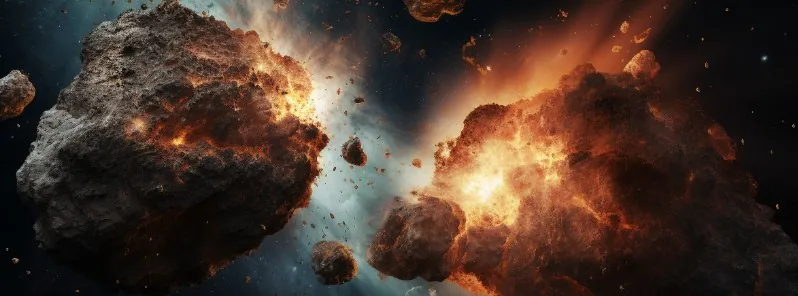Researchers at Yale propose a solution to the magnetic meteorite mystery

In a breakthrough study, Yale scientists Zhongtian Zhang and David Bercovici have proposed that the magnetism observed in certain meteorites may originate from asteroid collisions. Their research, published in the Proceedings of the National Academy of Sciences, suggests that under specific conditions, these violent impacts could generate a magnetic field in metallic asteroids, with fragments bearing traces of this magnetism eventually falling to Earth.
The formation of magnetic fields in celestial bodies plays a crucial role in understanding their internal structure and evolution. This magnetism is detectable in the cores of Earth, Mercury, and two of Jupiter’s moons, Ganymede and Io, while remnants of ancient magnetism are found on Mars and Earth’s moon. Surprisingly, some iron meteorites also hint at magnetism, a phenomenon previously deemed impossible as the metallic cores of asteroids, represented by these meteorites, lack the necessary internal traits for generating and recording magnetism.
Zhang and Bercovici’s study, however, presents a different perspective. The scientists propose that asteroid collisions, under certain conditions, can lead to the formation of metal asteroids that can generate and preserve a magnetic field.
This research was prompted by Zhang’s investigation into “rubble-pile” asteroids, formed when gravitational forces cause fragments of asteroid collisions to reorganize. The idea that the phenomenon of rubble pile formation might correlate with magnetic field generation was then pursued.
Zhang and Bercovici’s model suggests that post-collision, new iron-rich asteroids could form with a cold, rubble-pile inner core encased in a warmer liquid outer layer. The core, when it begins to absorb heat from the outer layer and releases lighter elements like sulphur, triggers convection, thus creating a magnetic field. The model suggests such a dynamo could generate a magnetic field for several million years, detectable in iron meteorites billions of years later.
“The idea of a rubble-pile core is really like dropping ice cubes into molten metal,” said Bercovici, elucidating on their findings. According to him, the fragments can’t be too big or small, but there is an optimal size, small enough to cool in space, yet sizable enough to sink swiftly into the melted metal and pile up in the center to form an inner core resembling Earth’s.
References:
1 Generation of a measurable magnetic field in a metal asteroid with a rubble-pile core – Zhongtian Zhang and David Bercovici – PNAS – July 31, 2023 – https://doi.org/10.1073/pnas.2221696120
2 A magnetic field mystery in space – YaleNews – August 1, 2023
Featured image credit: The Watchers

Interesting article, but I seem to remember that when heating a metalic object with magnetic properties to 300C, (earth entry temperatures way exceed this), any ferromagnetism is lost. Also hitting two magnets together destroys or at least weakens the magnetism, not adding to it as the research says.
I may be missing something here and would stand to be corrected though.